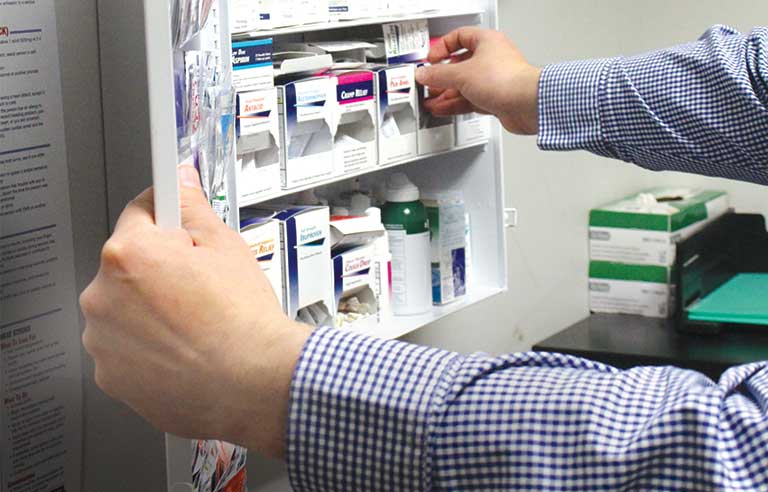To comply with federal and provincial regulations, worksites must have equipment and supplies to provide first aid care in the event of an injury or illness. However, it’s not enough to have a first aid kit available in case of an emergency. The contents of your first aid kit should be well-stocked, clean, safe, and up-to-date. Therefore, first aid kit inspection should occur regularly; the best practice would be to inspect first aid kits monthly.
Here are steps to take to ensure your first aid kits are ready for emergencies:
- Implement a first aid kit inspection program – Employees should know their roles and responsibilities about first aid. If all employees have access to the first aid kit, a defined person should conduct inspections. Establish an inspection schedule.
- Check expiration dates – Items like ointments, sprays, medicines, eyewashes, eyedrops, and medicated wipes have expiration dates.
- Arrange products strategically – Newer products should go in the back; keep items that will expire first in the front. Pay attention to products that have already been opened to track how much of the product is left. This practice will require placing and rotating items wisely and help prevent running out of a particular item. It may also involve analyzing what illnesses and injuries occur most frequently, allowing you to place the most needed items within immediate reach.
- Prevent cross-contamination – Items can contaminate others when they are damaged or dirty. This can happen when a product has been partially used. This is why it’s best to use single-use products that can be thrown away after use.
- Clean and sanitize the kit – Keeping the kit in which the products are stored helps prevent contamination and degradation of items. The kit itself should be dry and kept at room temperature as moisture and heat can affect the product’s packaging or the chemical composition of products like medicine.
First Aid Best Practices
Beyond regularly inspecting first aid kits, a first aid program should be implemented. Here are some best practices:
- - Place the first aid kit in a location that is accessible to all employees.
- - Adequately stock the first aid kit with all necessary supplies.
- - Keep a record of first aid treatments.
- - Post first aid certificates
- - Maintain a record of first aid kit inspections.
The purpose of the first aid kit is to provide sick or injured employees the best care before they receive professional medical attention – preventing the sickness or injury from getting worse and promoting recovery. The goal of any company, regardless of industry, should be the health and safety of its workers.











